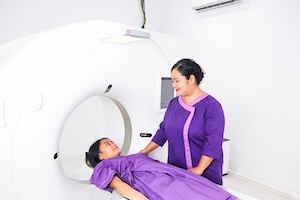
In today’s healthcare landscape, the role of diagnostic imaging has evolved beyond merely identifying illness—it now plays an important role in early detection and proactive health management. Clinics that specialise in womens imaging are leading the way in delivering timely diagnoses that significantly improve treatment outcomes. Facilities like narre warren radiology are at the forefront of this movement, offering advanced tools that help detect issues before symptoms even appear.
Modern scans now offer an extraordinary window into the body, allowing radiologists and medical professionals to detect subtle changes in tissue, organ structure, or function long before they present as outward symptoms. In many cases, these early markers can indicate a condition is developing—such as cancer, cardiovascular disease, or neurological disorders—long before it causes pain or loss of function. It’s in these critical early stages that treatments are often the most effective, least invasive, and least expensive.
One of the key reasons imaging is proving so effective in early detection is the sheer range and specificity of technologies now available. For instance, 3D mammography, also known as digital breast tomosynthesis, provides a more comprehensive view of breast tissue than traditional 2D scans. This is particularly valuable in identifying early-stage breast cancer, where conventional mammography may miss smaller lesions. Tools like Volpara software and Transpara AI are enhancing these scans with machine learning, allowing for even greater accuracy and personalized risk assessment.

Similarly, computed tomography (CT) scans and magnetic resonance imaging (MRI) offer detailed cross-sectional images of internal organs, allowing for the detection of small tumours or abnormalities that might be overlooked by standard examinations. In oncology, full-body PET-CT scans have become integral to screening high-risk individuals and monitoring changes over time. By identifying cancer at Stage I rather than Stage III or IV, the prognosis changes dramatically, often with less aggressive treatment required.
It’s not just cancer where early detection matters. Cardiovascular imaging—including CT angiography—can identify arterial plaques before they lead to life threatening complications like heart attacks or strokes. These non-invasive scans provide a clear picture of blood vessel health and help guide preventive care strategies. Rather than waiting for a cardiac event to act, clinicians can start medications, lifestyle changes, or even minor procedures that can stave off future emergencies.
Neurological disorders, too, benefit from this proactive approach. MRI scans of the brain helps identify early signs of diseases like Alzheimer’s, multiple sclerosis, or Parkinson’s. Detecting these markers early gives patients the opportunity to explore interventions and therapies that may slow progression or improve quality of life. Additionally, in cases where headaches, dizziness or cognitive symptoms begin to arise, advanced brain imaging helps rule out—or confirm—potential underlying causes quickly.
Beyond disease, imaging is also becoming integral in monitoring wellness. Biologic therapies and regenerative medicine, such as platelet-rich plasma (PRP) treatments, are often guided and evaluated through ultrasound and MRI imaging. By visualising tissue repair, inflammation, or degeneration, physicians can make decisions about the effectiveness of ongoing treatments. This aligns with the increasing trend of personalising medicine based on an individual’s specific condition and response.
Radiology clinics are now increasingly offering outpatient procedures that combine diagnosis and treatment in one visit. For example, image-guided spinal injections or nerve blocks are used not just for relief but as diagnostic tools to determine the exact source. Through fluoroscopy or CT guidance, these procedures are both precise and safe, helping patients avoid unnecessary surgeries or long recovery times. The use of imaging in guiding interventions has also extended to orthopaedics, rheumatology, and even pain management, improving outcomes across the board.
Ultrasound-guided interventions, such as draining ganglion cysts or managing thyroid nodules through fine needle aspiration, further highlight how imaging is used in a preventative and low-risk manner. With minimal disruption to the body, these procedures enable timely action before complications arise.
Accessibility is another key factor supporting the success of early detection efforts. As more radiology providers expand into suburban and regional centres, services are becoming easier for patients to access. With facilities like Narre Warren radiology bringing cutting-edge technology to local communities, patients no longer have to travel long distances for high-quality care. This helps break down barriers that once prevented early scanning, particularly in populations that may be at higher risk or less inclined to seek routine testing.
Equally important is the role of radiologists as specialists who interpret these images with an eye not just for what is present, but what might be developing. Their expertise is instrumental in drawing attention to patterns or anomalies that could be easily missed in a general check-up. The collaboration between radiologists and referring clinicians ensures that patients receive thorough follow-up and care planning, guided by data, not just assumptions.
As imaging continues to evolve, AI and automation will likely further refine our ability to detect disease at its inception. These tools are designed not to replace radiologists, but to augment their work—flagging patterns, reducing oversight, and speeding up diagnostic processes without compromising accuracy.
Ultimately, the goal of modern scans is not only to find illness but to give individuals control over their health. With earlier answers comes earlier action, and in many cases, the opportunity to prevent illness altogether. Whether through scheduled screenings, monitoring of pre-existing conditions, or one-off evaluations following a symptom, diagnostic imaging plays an essential role in today’s preventive healthcare model.
Healthcare providers and patients are beginning to understand the value of imaging not as a last resort, but as a first line of defence. It’s a mindset that is reshaping the patient experience—making healthcare more proactive, personalised, and effective.




